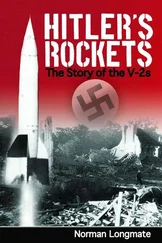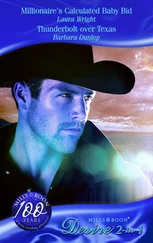Mike Mullane - Riding Rockets
Здесь есть возможность читать онлайн «Mike Mullane - Riding Rockets» весь текст электронной книги совершенно бесплатно (целиком полную версию без сокращений). В некоторых случаях можно слушать аудио, скачать через торрент в формате fb2 и присутствует краткое содержание. Жанр: Старинная литература, на английском языке. Описание произведения, (предисловие) а так же отзывы посетителей доступны на портале библиотеки ЛибКат.
- Название:Riding Rockets
- Автор:
- Жанр:
- Год:неизвестен
- ISBN:нет данных
- Рейтинг книги:3 / 5. Голосов: 2
-
Избранное:Добавить в избранное
- Отзывы:
-
Ваша оценка:
- 60
- 1
- 2
- 3
- 4
- 5
Riding Rockets: краткое содержание, описание и аннотация
Предлагаем к чтению аннотацию, описание, краткое содержание или предисловие (зависит от того, что написал сам автор книги «Riding Rockets»). Если вы не нашли необходимую информацию о книге — напишите в комментариях, мы постараемся отыскать её.
Riding Rockets — читать онлайн бесплатно полную книгу (весь текст) целиком
Ниже представлен текст книги, разбитый по страницам. Система сохранения места последней прочитанной страницы, позволяет с удобством читать онлайн бесплатно книгу «Riding Rockets», без необходимости каждый раз заново искать на чём Вы остановились. Поставьте закладку, и сможете в любой момент перейти на страницу, на которой закончили чтение.
Интервал:
Закладка:
Brewster, a short, wiry, reticent air force pilot, shot Walker a look that read, “After this meeting is over, I’m going to personally shove that freakin’ tire up your ass and then reinflate it!” We had been caught, given up by one of our own. There was no way anybody in that room was going to believe Brewster, a test pilot, had forgotten to hold up the jet’s nose, any more than they would have believed Nolan Ryan had forgotten how to throw a fastball. John Young, in particular, was looking for an explanation.
An hour later we were in his office giving him one…the truth. “I let Mike do the landing, John.” After the confession it was painfully obvious we were going to need new assholes. Young gave us a well-deserved reaming. “I’m constantly fighting headquarters to keep these ’38s and stunts like this jeopardize it for all of us. MSes aren’t pilots. Letting Mullane land was the dumbest thing I’ve heard in a long time.”
During our grilling, I was struck by how uncomfortable Young appeared to be with command. As with his welcome speech, he couldn’t make eye contact. He looked at his shoes. He looked at papers on his desk. He looked out the window. He looked everywhere but into our eyes. In every prior ass chewing I had ever received from my military commander, and there had been a few, their eyes had been the worst. They had drilled into my very soul and filled me with dread. I recalled my last commander, Colonel Jim Glenn, haranguing me and my pilot for having disobeyed a checklist procedure to jettison some hot ordnance before making an emergency landing. Colonel Glenn had stared at us with the intensity of a cobra. I was embarrassed for Young and his dancing eyes. His unease was palpable. But we were finally dismissed to return to our offices and worry about whether we’d ever fly in space.
The flat tire incident didn’t hurt Brewster’s career. In fact he flew before Dave Walker, on STS-9 as—get this—John Young’s copilot! I can only assume that Young never really knew it was Brewster who had screwed up because he had never looked him in the face.
There was one aspect of the T-38 flying I wondered about. How would the civilians handle the issue of airsickness? Some of them were going to be affected, of that, I was sure. I had been in my early air force flying career. When I made my transition to the backseat of the F-4 Phantom, I vomited enough for a squadron of men. Would any of the civilians have a similar experience? Would any of them give up? There were whispers of some being as tormented as I had been. The office grapevine had it that Rhea Seddon was struggling and Hoot Gibson was taking her on flights to help her adjust. She didn’t quit. None of the civilians did. I admired them for it. It was a shared experience and another lesson for me that the civilian TFNGs were not the wimps I had imagined they were.
Chapter 13
Training
The training we had all been anxiously anticipating—how to operate and fly the space shuttle—began in earnest in 1979. It was a training program that would last our entire careers. The shuttle cockpit has more than a thousand hardware and software switches, controls, instruments, and circuit breakers. Before our first ride, we would have to know the function of all of them.
The heart of NASA’s training was simulation. Anything associated with spaceflight that could be simulated, was. There were part-task trainers in which individual systems were simulated: the hydraulic system, the electrical system, the environmental control system, the main engine system, the attitude control system, the orbital maneuvering system, and all the other systems that made up the space shuttle. We were scheduled in these trainers again and again until we had a working knowledge of each switch and computer display for that particular system. Then we would go through the emergency procedures for each system.
There were no tests in our training. We had a motivation far more compelling than any written test…ourselves. The military flyer’s creed said it best, “Better dead than look bad.” Nobody wanted to look bad in front of their peers. So we attacked the training as if something more important than our lives depended upon it, since something more important did…our egos.
We graduated from the part-task simulators to the Shuttle Mission Simulator (SMS). NASA had two of these machines, both featuring exact replicas of the space shuttle cockpit. The “fixed-base” SMS was, as the name implied, fixed; it didn’t move. It was used for orbit simulations. The “motion-base” SMS was used for ascent and entry training. Perched atop six hydraulic legs that could tilt, pitch, and shake the cockpit to simulate launch and landing maneuvers, it looked like a giant mutant insect from a sci-fi movie. In both SMSes, computer-generated graphics appeared in the windows to provide representations of the cargo bay, robot arm, payloads, rendezvous targets, and runways. The simulators could be electronically linked to Mission Control for “integrated” simulations in which the astronaut crews would fly missions with the same MCC team that would watch over them during the actual mission.
The SMS training was orchestrated by a Simulator Supervisor (Sim Sup, pronounced “sim soup”) and his/her team. Sitting at computer consoles in back rooms, these engineers could input malfunctions and watch the responses of the crew and MCC. Sim Sups were virtuosos from hell. Astronauts joked that simulation supervisors intentionally remained celibate for weeks prior to a simulation, wore shoes a size too small, and starched their underwear just to be frustrated and mean.
Within seconds after a simulated liftoff, a Sim Sup would introduce malfunctions that would have the crew scrambling to respond to a failed engine, an overheated hydraulic pump, a leaking reaction control system, and a shorted electrical system. Astronauts scheduled for “Ascent Skills” training jokingly referred to it as “Ascent Kills.” It was an exaggeration. The simulation objective wasn’t to kill the crew. Any mission that ended in a crash was considered poorly written or poorly executed. Instead, the Sim Sups and their teams designed missions that stressed the astronauts and MCC to their absolute limits. And their genius and dedication showed in the missions. No astronaut crew has ever been lost in flight because they were not adequately trained. No mission has ever failed to achieve its objectives because of a deficiency in training.
In my first SMS session I had a flashback to my arrival day at West Point. Then, an upperclassman had told me to relax and turn around to take in the magnificence of the campus. “Mr. Mullane, have a good look. Over there is Trophy Point and the beautiful Hudson River, and up there is the famous Protestant Chapel. Take it all in…because this will be the last time for eleven months that you’ll see it. You have now died and gone to hell. GET YOUR NECK IN AND YOUR EYES STRAIGHT FORWARD, MISTER!”
My first SMS experience was similar. The Sim Sup let us enjoy a perfectly nominal ascent into orbit. We felt the simulated rumble of engine ignition (delivered through the hydraulic legs), saw the computer-generated image of the gantry speed past the window, felt the Gs rise (simulated by increasing the tilt of the cockpit), experienced the bang-flash of SRB separation, and enjoyed the ride all the way to Main Engine Cutoff (MECO). Then, as he was resetting his computers, Sim Sup said, “I hope you enjoyed it. It’s the last one you’ll ever see.” He was almost right. In my twelve-year NASA career, I saw only three more malfunction-free SMS ascents. Each of those came just before departing to Kennedy Space Center for each of my three missions. In spite of rumors to the contrary, Sim Sups had hearts. They wanted us to leave for our missions on a high note, to see what we’d hopefully see during our real ascent a few days later…a completely nominal ride into space.
Читать дальшеИнтервал:
Закладка:
Похожие книги на «Riding Rockets»
Представляем Вашему вниманию похожие книги на «Riding Rockets» списком для выбора. Мы отобрали схожую по названию и смыслу литературу в надежде предоставить читателям больше вариантов отыскать новые, интересные, ещё непрочитанные произведения.
Обсуждение, отзывы о книге «Riding Rockets» и просто собственные мнения читателей. Оставьте ваши комментарии, напишите, что Вы думаете о произведении, его смысле или главных героях. Укажите что конкретно понравилось, а что нет, и почему Вы так считаете.












